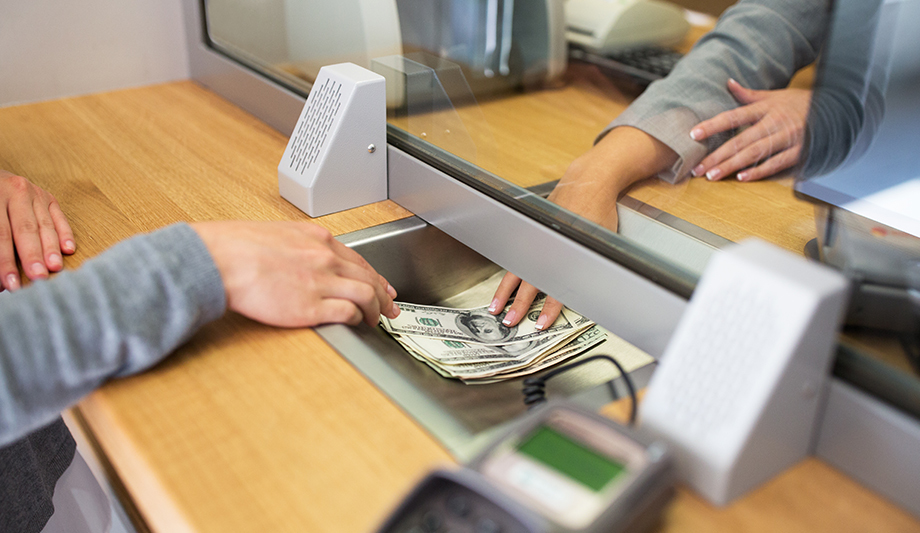Retail banking is facing increasing pressure from customers, investors and other stakeholders to take a proactive stance on safety issues relating to people and financial assets. Whether it's ATM robbery or bank hold-ups, safety is becoming a key feature of corporate governance.
To address these issues reliably and cost effectively, retail banks can protect their staff and assets more effectively with Sony Network Video Monitoring solutions.
Small, discreet IP cameras can be positioned anywhere within a bank's premises to keep a watchful eye on cash desks, counters, doorways and staff entrances as well as deposit vaults and other secure areas. Staff can monitor images in real time using any desktop PC, and recordings can be archived securely for browsing and searching at any time.
Camera recordings can be activated automatically or via an alarm trigger event, and camera control can be integrated with other security elements like door access systems. Sony Network Video Monitoring dovetails seamlessly with banks' existing IT and networking infrastructures.
Legacy CCTV cameras can also be integrated easily into an all-IP network to limit capital expenditure.
Unbreakable security
In the past, IP-based cameras were thought to be a security risk. There was a danger that someone could unplug them and use their IP connection as a point of entry to a network. Or, like the crew in Ocean's Eleven, use it to simulate a security camera by streaming different visual content.
Traditional means of defense against this form of network attack are diverse. They range from physical devices that lock IP cables in place and prevent them from being disconnected, to electronic disabling of network points should a device be disconnected from it. But none really offer the failsafe security that's required for business-critical surveillance and monitoring applications.
However, in today's networked environment, security is tighter and it is virtually impossible to tamper with IP cameras. This is thanks to two key network security technologies.
IEEE 802.1x authentication
With the introduction of the IEEE 802.1x standard, network video monitoring has gained an important security boost. The technology provides a means of authenticating every device (or client) that's attached to every network port. So if a camera is attached that the network doesn't recognize, it simply won't let it on.
Here's how it works:
- A client is connected to a network port and requests access to the network.
- The port's switch requests confirmation from an authentication server that the client is allowed onto the network.
- If confirmed, the switch allows network traffic to pass to and from the client.
- If not confirmed, the client is refused access to the network.
This means you don't have to worry about disabling unused network ports in fear of someone hijacking them for malicious use. You can leave all ports wired and enabled, ready for genuine use. This gives your business great flexibility. You can deploy and redeploy network cameras both quickly and conveniently, without any lengthy installation times.
SSL encryption
 |
| The SNC-RZ50P is an intelligent Pan/Tilt/Zoom camera |
The Secure Sockets Layer protocol - or SSL, for short - eliminates the threat of eavesdropping and tampering by encrypting data that travels across IP networks.
It's frequently used in Internet-based transactions, and is the technology that prevents your bank or credit card details from being accessed by third parties when making an online purchase.
In the context of network video monitoring, it prevents video from a network camera being snooped on by an unauthorized viewer - or worse still, from being intercepted and altered before it reaches its intended destination.
It works as follows:
- The camera connects with the playback device (e.g., a PC or network recorder) to establish a secure connection.
- This involves agreeing on a number of common parameters and exchanging digital certificates (for identification) and public key details (for encryption).
- A test is carried out involving the encryption and decryption of a random number.
- If successful, the secure connection is established and data can be transferred.
- All data transferred during the session is securely encrypted at the camera side and decrypted by the playback device.
By using the SSL protocol, you can be sure that all video received by a playback device is authentic - and that no unauthorized network users have access to it.
True peace of mind
The combined benefits of both IEEE 802.1x authentication and SSL encryption bring a high level of security to network video monitoring - so you can continue your move to a full IP-based environment with true peace of mind.
Both IEEE 802.1 authentication and SSL encryption are supported via firmware upgrades to all Sony multi-codec network cameras including the SNC-RZ50P, SNC-CS50P, SNC-RX550P, SNC-DF50P and SNC-DF80P.










